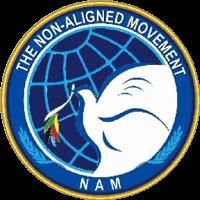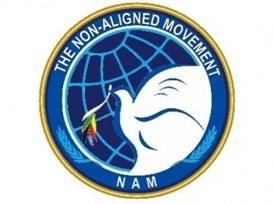Revision Notes: Non-Aligned Movement | History and Civics Class 10 ICSE PDF Download
Non-Aligned Movement (NAM)

The Non-Aligned Movement (NAM) came into existence after the Second World War when the world was divided into two opposing blocs: the capitalist bloc led by the United States and the socialist bloc led by the Soviet Union. Many newly independent Asian and African nations chose not to align with either bloc, opting instead for a policy of non-alignment.
Meaning of Non-Alignment
Non-alignment was an international policy adopted by several Asian and African nations, wherein they refused to align themselves with either the capitalist or socialist bloc. The aim was to promote international peace, harmony, and cooperation among nations.
Main Features of NAM:
- Refusal to join any powerful military bloc.
- Opposition to military alliances such as NATO, SEATO, and the Warsaw Pact.
- Freedom to make independent decisions regarding foreign policy.
- Participation in global affairs.
- Judging issues on their own merit.
The division of the world into two main blocs intensified the arms race between Western and Eastern European countries, leading to several disturbances in world peace. NAM aimed to counter this by promoting peaceful coexistence and cooperation among nations.
Factors Leading to the Rise of NAM
- Global Tension from the Cold War: Newly independent Asian and African nations were wary of joining any power bloc during the Cold War, as they believed it would hinder global peace.
- Struggle Against Imperialism and Neo-Colonialism: These nations, having gained independence after a long struggle against colonial powers, were determined not to let Western and European countries dominate their foreign policy by joining a bloc.
- Independent Foreign Policy: Non-aligned members valued the principle of non-interference in their domestic and international affairs.
- Moderation: The newly independent countries in Asia and Africa aimed to promote peace and goodwill among themselves, fostering friendly relations with all countries to enhance mutual interests.
- Restructuring the International Economic Order: Most Asian and African countries were economically backward and required capital and technological assistance to improve their conditions. They believed that staying out of political alliances and pursuing NAM would better serve their interests.
- Formation of a Collective Force: Asian and African nations recognized the need to form a collective force due to their common experiences of economic exploitation and political domination by European countries. This shared experience fostered a sense of affinity and cooperation among them.
Evolution of NAM
- New Delhi Conference (1947): Prime Minister Jawaharlal Nehru emphasized the dangers of hostility between power blocs and the need for Asian countries to work together for world peace.
- Second Conference in New Delhi (1949): Attended by 19 countries, this conference called for the immediate withdrawal of Dutch troops from Indonesia.
- Panchsheel Agreement (1954): India and China agreed on the five principles of peaceful coexistence, which later became NAM guidelines: non-interference in internal affairs, mutual non-aggression, equality for mutual benefit, respect for territorial integrity and sovereignty, and peaceful coexistence.
- Bandung Conference (1955): A significant step in NAM's formation, attended by 29 countries, including Indonesia, Turkey, China, and the Philippines.
Initiation of NAM
The idea for the Non-Aligned Movement (NAM) was proposed during the Asian Relations Conference in 1947.
- The first formal step towards NAM was taken at the Bandung Conference in 1955, organized by Indonesia.
- At this conference, leaders from 29 Asian and African countries gathered to discuss various issues, including anti-colonialism, economic cooperation, and cultural exchange.
- The conference was significant in promoting solidarity among newly independent nations and laid the groundwork for the future Non-Aligned Movement.
Formation of NAM
- The actual formation of NAM took place during the Belgrade Conference in 1961, where the movement was officially established as a platform for countries to remain neutral in the Cold War rivalry between the United States and the Soviet Union.
- The movement aimed to provide a voice for nations seeking to avoid alignment with either bloc while promoting peace, security, and cooperation among member states.
Role of Leaders
- The Bandung Conference was crucial in shaping the principles of NAM, with leaders like Jawaharlal Nehru (India), Sukarno (Indonesia), and Gamal Abdel Nasser (Egypt) playing a pivotal role in advocating for non-alignment and cooperation among developing countries.
- Their vision and efforts during this period contributed significantly to the establishment and growth of the Non-Aligned Movement in the subsequent years.
New Challenges
- The Non-Aligned Movement (NAM) initially focused on promoting peace and cooperation among developing countries.
- However, over time, it faced new challenges, including the need to address issues like terrorism, climate change, and global economic inequalities.
- These challenges prompted NAM to adapt its agenda and address contemporary global concerns while maintaining its core principles of non-alignment and solidarity among member states.
Third Summit of NAM
The third summit of NAM took place in Lusaka, Zambia in 1970.
- This summit was significant in addressing various global issues and reaffirming the principles of non-alignment and cooperation among member states.
- It provided a platform for leaders to discuss and coordinate their positions on pressing international matters, reflecting NAM's commitment to promoting peace and solidarity among developing countries.
Objectives of NAM
- Not to join any power bloc or any military alliance
- To eliminate all those causes which may lead to a war
- To oppose colonialism, imperialism and racial discrimination
- To encourage countries to maintain friendly relations with each other
- To stress on peaceful settlement of international disputes
- To oppose the use of nuclear weapons in war
- To work towards strengthening UNO
- To protect human rights and to protect the environment
- To build a new international economic order based on equity, equality and justice
Role of Jawaharlal Nehru in NAM
- Initiating Non-Aligned Policy: India, under Jawaharlal Nehru, was the first to advocate the non-aligned policy. Nehru believed that newly independent countries like India faced significant risks by joining either of the two global power blocs during the Cold War.
- Advocating Independence from Power Blocs: Nehru urged all nations to distance themselves from the major power blocs, promoting the idea of remaining independent and neutral. His vision was to encourage Asian and African nations to resist the division of the world into rival blocs.
- Bandung Conference and NAM: Nehru played a crucial role in the Bandung Conference, alongside leaders like Tito of Yugoslavia, Nasser of Egypt, Ho Chi Minh of Vietnam, and Kwame Nkrumah of Ghana. This conference was instrumental in shaping the Non-Aligned Movement (NAM).
- Spokesperson for Neutrality: Nehru became a prominent advocate for the neutrality of Asian and African states during the Cold War, emphasizing the importance of not aligning with either superpower.
- Opposition to Military Alliances: Nehru opposed the formation of military alliances, believing they would lead to an arms race and increased tensions. He viewed such alliances as detrimental to global peace.
- Views on Communism and Socialism: Nehru criticized the communist state as “monolithic” and considered Marxism an outdated ideology. While he did not fully endorse capitalism, he leaned towards socialism as a preferable system.
- India’s Role in NAM and Global Affairs: Under Nehru’s leadership, India played a vital role in NAM and global affairs during the Cold War, supporting various countries in their quest for independence and advocating for a non-aligned stance.
- Leadership in World Affairs: Nehru’s dynamic leadership positioned India as a significant player in world affairs during the Cold War, promoting the cause of non-alignment and supporting decolonization efforts globally.
Achievements of NAM
- NAM played a crucial role in reducing tensions between the two power blocs during the Cold War and contributed to its eventual end.
- The movement opposed the arms race that was prevalent among various countries during the Cold War era.
- NAM actively supported and promoted international peace, justice, and freedom.
- It advocated for a new international economic order aimed at greater economic cooperation and justice.
Future of NAM

- Despite losing prominence after the Cold War ended in 1991, NAM continues to stand for international peace and security.
- The movement faced challenges in taking significant actions during critical events like the Russian invasion of Afghanistan in 1979 and the US-led invasion of Iraq.
- With the rise of neo-colonialism, many newly independent nations found it difficult to make concrete economic decisions due to pressure from powerful countries and organizations like the World Bank, WTO, and IMF. NAM stepped in to assist these countries in asserting their economic rights.
- As the USA emerged as a dominant power, NAM has the potential and experience to prevent US domination over countries like Iraq and Afghanistan.
- Thus, NAM remains an important and powerful force aimed at achieving international peace, disarmament, and economic development.
|
28 videos|104 docs|27 tests
|
FAQs on Revision Notes: Non-Aligned Movement - History and Civics Class 10 ICSE
| 1. What is the Non-Aligned Movement (NAM) and its primary purpose? |  |
| 2. When and where was the Non-Aligned Movement founded? |  |
| 3. What are the key principles of the Non-Aligned Movement? |  |
| 4. How has the Non-Aligned Movement evolved over the years? |  |
| 5. What role does the Non-Aligned Movement play in global politics today? |  |




















